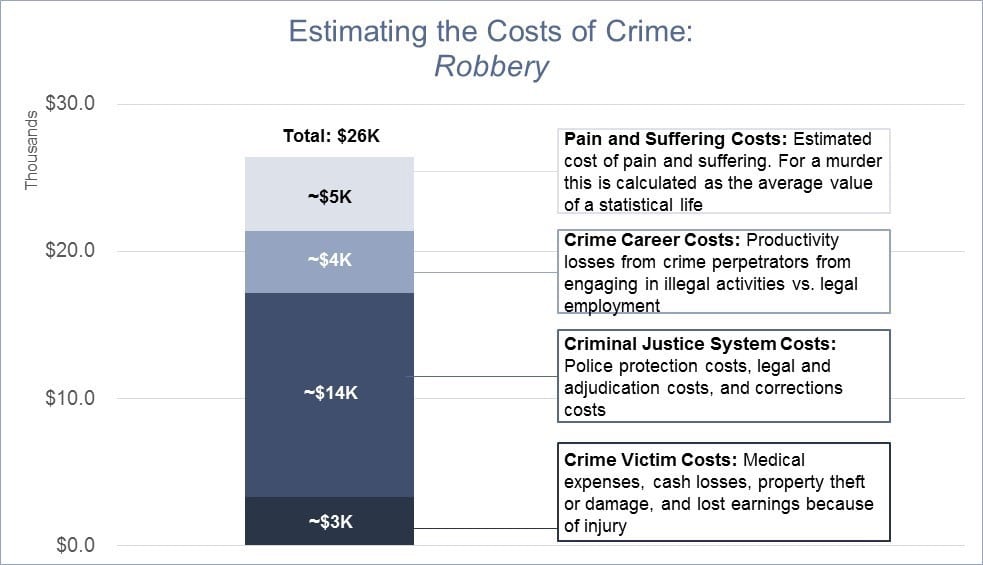

Public Sector Solutions, Public Safety & Reentry, Results-Based Funding
Mass incarceration is a large and intractable problem in the United States, where we have only 5% of the world’s population, but 25% of its prisoners. Unlike many other countries in the developed world, we generally treat incarceration as punishment, rather than rehabilitation. Yet, when individuals leave prison, we expect them to jump right back in as productive members of society.
In determining whether our correctional systems are succeeding, we focus on metrics like recidivism — the tendency of a convicted criminal to reoffend. And for good reason — according to a study from the Bureau of Justice Statistics, more than two-thirds of prisoners released in 2005 were arrested for a new crime within three years of release; more than three-quarters were arrested within five years. What these metrics fail to explain are the contributing factors that so often lead to these repeat interactions with the justice system.
Consider the approximately 2,000 people who walk out of prison each day. From the moment an individual sets foot outside, he or she will have a number of important and interrelated challenges that need to be addressed.
One immediate concern will be housing — for the first few weeks and months, many recently released individuals are likely to land with a friend or family member, or even in an emergency shelter. Figuring out a permanent, stable housing situation can be a long, arduous process, particularly given a national shortage of affordable housing and federally subsidized housing units, not to mention discrimination by landlords.
Another challenge will be employment. Many jobs — up to 40% — may be completely off-limits to ex-offenders by law, and even if they’re not legally prohibited from doing so, employers may just refuse to consider ex-offenders for open positions. Those released from prison may not have the documentation they need to obtain jobs or housing — for example, some states automatically suspend or revoke driver’s licenses at the time of conviction, even for offenses that are unrelated to driving. Research suggests that between 60% and 75% of ex-offenders are jobless for up to a year after release and that even if a job is obtained, prison time can lower wages by up to 20%.
et another consideration is finding mental health support or substance use treatment. By one estimate, 85 percent of the U.S. prison population, or 1.3 million people, either suffer from or have histories of substance use disorders. And the stress of dealing with all of these challenges post-release only compounds the problem: former inmates’ risk of a fatal drug overdose is 129 times higher than the general population during the two weeks after release. Individuals who receive needed medication or treatment while incarcerated are faced with an abrupt end of services and subsidized medication.
Failing to address these challenges holistically contributes to a cycle of incarceration — and when individuals re-offend, it generates significant costs to government and to society more broadly. The societal cost of crime, including both tangible costs (such as costs to the criminal justice system at federal, state and local levels and medical costs to victims) as well as intangible costs (such as pain and suffering to victims) has been estimated at $3,523 for a minor crime like larceny, up to almost $1.3 million for murder.

For the approximately 80% of individuals assigned to supervision as a condition of release, probation or parole officers may be able to help direct them to various resources based on need. But supervision practices vary widely; individuals are largely are on their own to figure out how to overcome these myriad challenges.
To address the needs of ex-offenders, jurisdictions need to take a collaborative approach to reentry. To help set individuals up for success, it’s critical to foster collaboration between government agencies, including departments of correction and supervision (probation and parole), workforce agencies, health and human services agencies, and social services providers, and to encourage a holistic approach to addressing an individual’s needs.
Integrating data to find highest-need individuals: In Sacramento, Social Finance worked with the City and the County to integrate disparate data systems across the shelter system, behavioral health and county jail to identify and better understand frequent users of these systems. The entire data integration process was anchored in the belief that to better serve these frequent users, a more comprehensive understanding of their challenges and interactions was necessary. Identifying the patterns of system use for 250 persistently homeless individuals is helping the City and County to extend long-term, preventive services to those with the greatest need, thereby improving outcomes for this vulnerable population and reducing strain on each of these overburdened systems.
Incentivizing a broader set of services by paying for outcomes: In Memphis, funded by a 2016 grant from the Corporation for National and Community Service, we’re working with the local workforce investment board, which focuses on employment and employment-related services. With 8,000 individuals on probation or parole in Shelby County, the Memphis Workforce Investment Network (WIN) recognized that the re-entry population is under-served and has an acute need for employment services. WIN pulled together a cross-sector working group of stakeholders, including representation from the Tennessee Department of Corrections and the Memphis Shelby Crime Commission, to help design and implement an outcomes rate card — a menu of outcomes that WIN hopes to achieve, and the associated prices it is willing to pay for each outcome — that will incentivize local providers to focus on this population.
Once implemented, the outcomes rate card will pay providers for achieving employment outcomes with medium and high-risk adults who have been recently involved with the justice system. In addition, the outcomes rate card is intended to incentivize providers to help participants with housing supports and avoided repeat justice system involvement.
Providing comprehensive case management: The Ventura County Project to Support Reentry aims to reduce criminal recidivism, improve public safety, and promote family stability and economic opportunity for 400 individuals on formal probation. Through the project, Interface Reentry Services offers comprehensive, individualized case management, coordinating with other organizations to provide a suite of evidence-based services, including Moral Reconation Therapy, trauma-informed cognitive behavioral therapy, relationship-building skills, and employment support. This deep collaboration and network of service providers breaks down traditional silos and helps ensure that individuals get the services they need to build stable and productive lives.
These three examples offer insight into how outcomes-based approaches can point the way towards broader system reform, helping break the cycle of re-incarceration and ensure that individuals leaving prison get the comprehensive support they need.
Related Insight

How Pay for Success Can Help Reduce Covid-19 Transmission in Prisons
The top 15 hotspots for COVID-19 transmission in America are in correctional facilities, with more than 186,000 cases and 1,120 deaths linked to prisons and jails, according to data from The New York Times.

Challenging the Status Quo: Philadelphia’s Exploration of Pay for Success
This report details Social Finance’s strategy in assessing the feasibility of the implementation of PFS in Philadelphia.